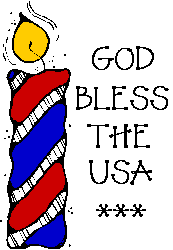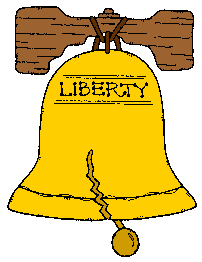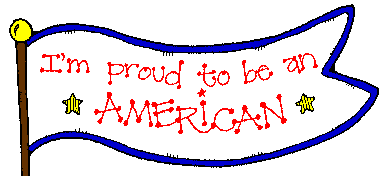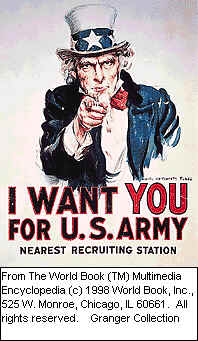A Short Synopsis Of Our Birthday

Independence

In the United States, Independence Day is celebrated on July 4th. On that day in 1776, the Continental Congress adopted the Declaration of Independence.
Definitions from Webster's Dictionary
Independence Day \In`de* pend " ence Day \ In the United States , a holiday , the 4th of July , commemorating the adoption of the Declaration of Independence on that day in 1776.
Declaration of Independence ( Amer . Hist .), the declaration of the Congress of the Thirteen United States of America , on the 4th of July , 1776, by which they formally declared that these colonies were free and independent States , not subject to the government of Great Britain .
The Liberty Bell
 Liberty Bell is a treasured relic of the early days of American independence. It was rung July 8, 1776, with other church bells, to announce the adoption of the Declaration of Independence. Its inscription, "Proclaim Liberty throughout all the land unto all the inhabitants thereof," is from the Bible (Lev. 25:10).
The Liberty Bell weighs over 2,080 pounds (943 kilograms). The colonial province of Pennsylvania paid about $300 for it in 1752. Today the bell hangs in Liberty Bell Pavilion, just north of Independence Hall in Philadelphia.
The Liberty Bell was first cast in England. It broke in ringing after its arrival and was recast in Philadelphia from the same metal, with the same inscription, in 1753. The Liberty Bell rang at each successive anniversary of the adoption of the Declaration until 1835. The bell broke on July 8 that year, while being rung during the funeral of John Marshall, chief justice of the United States. It became known as the Liberty Bell about 1839, when abolitionists began to refer to it that way. Previously, the bell had been called the Old State House Bell.
The Liberty Bell is no longer rung, but it has been struck on special occasions. On June 6, 1944, when Allied forces landed in France, Philadelphia officials struck the bell. Sound equipment broadcast the tone to all parts of the nation. Independence Hall was the permanent residence of the bell from 1753 until Jan. 1, 1976, when it was moved to the pavilion.
Liberty Bell is a treasured relic of the early days of American independence. It was rung July 8, 1776, with other church bells, to announce the adoption of the Declaration of Independence. Its inscription, "Proclaim Liberty throughout all the land unto all the inhabitants thereof," is from the Bible (Lev. 25:10).
The Liberty Bell weighs over 2,080 pounds (943 kilograms). The colonial province of Pennsylvania paid about $300 for it in 1752. Today the bell hangs in Liberty Bell Pavilion, just north of Independence Hall in Philadelphia.
The Liberty Bell was first cast in England. It broke in ringing after its arrival and was recast in Philadelphia from the same metal, with the same inscription, in 1753. The Liberty Bell rang at each successive anniversary of the adoption of the Declaration until 1835. The bell broke on July 8 that year, while being rung during the funeral of John Marshall, chief justice of the United States. It became known as the Liberty Bell about 1839, when abolitionists began to refer to it that way. Previously, the bell had been called the Old State House Bell.
The Liberty Bell is no longer rung, but it has been struck on special occasions. On June 6, 1944, when Allied forces landed in France, Philadelphia officials struck the bell. Sound equipment broadcast the tone to all parts of the nation. Independence Hall was the permanent residence of the bell from 1753 until Jan. 1, 1976, when it was moved to the pavilion.
Declaration Of Independence
Declaration of Independence is the historic document in which the American Colonies declared their freedom from Britain. The Second Continental Congress, a meeting of delegates from the colonies, adopted the Declaration on July 4, 1776. This date has been celebrated ever since as the birthday of the United States.
The Declaration of Independence eloquently expressed the colonies' reasons for proclaiming their freedom. The document blamed the British government for many abuses. However, it also stated that all people have certain rights, including the right to change or overthrow any government that denies them their rights. The ideas expressed so majestically in the Declaration have long inspired freedom-loving people throughout the world.
When was the Adoption of the Declaration?
On July 2, the Congress approved the Lee resolution. The delegates then began to debate Jefferson's draft. A few passages, including one condemning King George for encouraging the slave trade, were removed. Most other changes dealt with style. On July 4, the Congress adopted the final draft of the Declaration of Independence.
Who were the first two signers of the Declaration?
The Declaration was signed by John Hancock as president of the Second Continental Congress and by Charles Thomson, the Congress's secretary. It was promptly printed and read to a large crowd in the State House yard on July 8. On July 19, the Congress ordered the Declaration to be engrossed (written in stylish script) on parchment. It also ordered that all its members sign the engrossed copy. Eventually, 56 members signed.
Where is the original Declaration of Independence?
The original parchment copy of the Declaration is housed in the National Archives Building in Washington, D.C. It is displayed with two other historic American documents--the United States Constitution and the Bill of Rights
Movement Toward Independence
The movement for independence (1754-1783)
Relations between the American Colonies and Great Britain began to break down during the mid-1700's. Little by little, Britain tightened its control over the colonies. Its leaders passed laws that taxed the colonists and restricted their freedom. The colonists had become accustomed to governing themselves, and had developed a sense of unity and independence. As a result, they deeply resented what they considered British interference in their affairs. Friction between the Americans and British mounted, and, on April 19, 1775, the Revolutionary War broke out between the two sides. During the war--on July 4, 1776--the colonists boldly declared their independence from their mighty British rulers. In 1783, they defeated the British and made their claim to independence stick.
Revolutionary War

Fighting broke out between American patriots and British soldiers in April 1775. The Americans in each colony were defended at first by the members of their citizen army, the militia. The militiamen came out to fight when the British neared their homes. The patriots soon established a regular military force known as the Continental Army. Britain depended chiefly on professional soldiers who had enlisted for long terms. The British soldiers were known as redcoats because they wore bright red jackets.
The patriots won several victories in New England and the Southern Colonies during the early months of the Revolutionary War. As the fighting spread, many Americans became convinced of the need to cut their ties with Great Britain. In July 1776, more than a year after the start of the Revolutionary War, the colonies adopted the Declaration of Independence.
As the fighting intensified, hopes of reconciliation with Britain faded. On June 7, 1776, Richard Henry Lee of Virginia introduced a resolution to the Second Continental Congress stating that "these United Colonies are, and of right ought to be, free and independent States ..." After several days of debate, the Congress appointed a committee to draft a declaration of independence. The committee gave the task to Thomas Jefferson of Virginia, who completed the work in about two weeks. Two other members, Benjamin Franklin of Pennsylvania and John Adams of Massachusetts, made a few minor changes
Uncle Sam

Uncle Sam is a figure that symbolizes the United States. The term originated as an unfriendly nickname for the U.S. government during the War of 1812.
The term "Uncle Sam" was used as early as 1813. In that year, a Troy, N.Y., newspaper stated that it apparently had arisen because of the initials "U.S." on government wagons. In 1816, the nickname appeared in a book title, The Adventures of Uncle Sam. It was later asserted that the term had its origin in a specific person--Samuel "Uncle Sam" Wilson of Troy, N.Y., who supplied the army with "U.S."-stamped barrels of provisions.
The costume of Uncle Sam, decorated with stars and stripes, originated in cartoons of the 1830's and 1840's. But the figure did not assume its present form until after the Civil War (1861-1865). In 1961, Congress passed a resolution saluting Samuel Wilson as the person who inspired America's national symbol.
"The colors of the pales (the vertical stripes) are those used in the flag of the United States of America; White signifies purity and innocence, Red, hardiness & valour, and Blue, the color of the Chief (the broad band above the stripes) signifies vigilance, perseverance & justice."